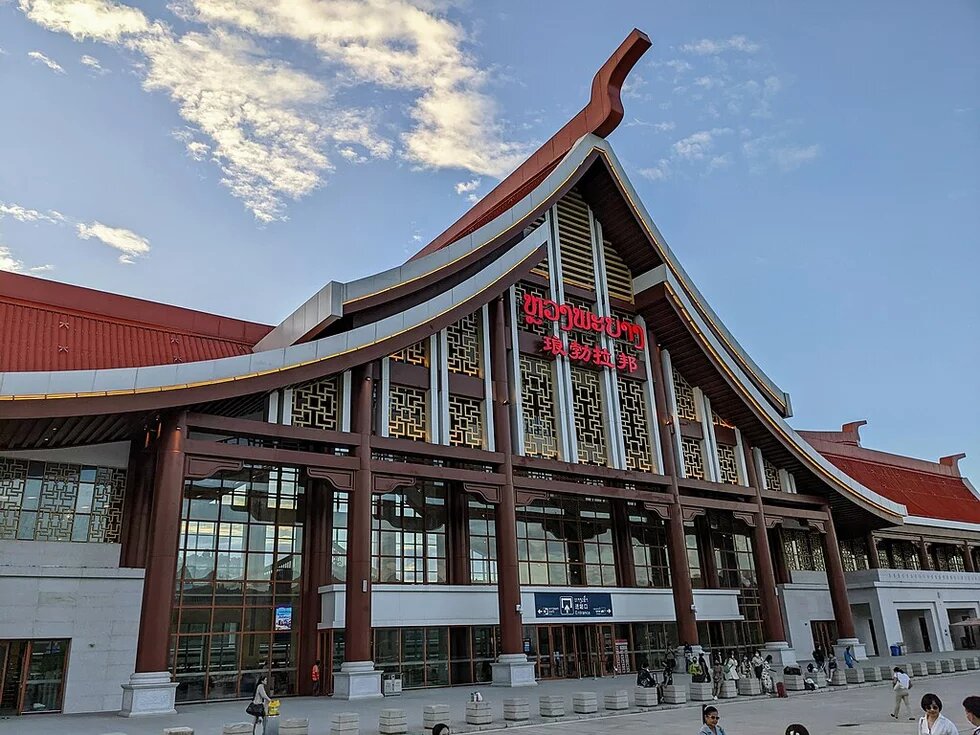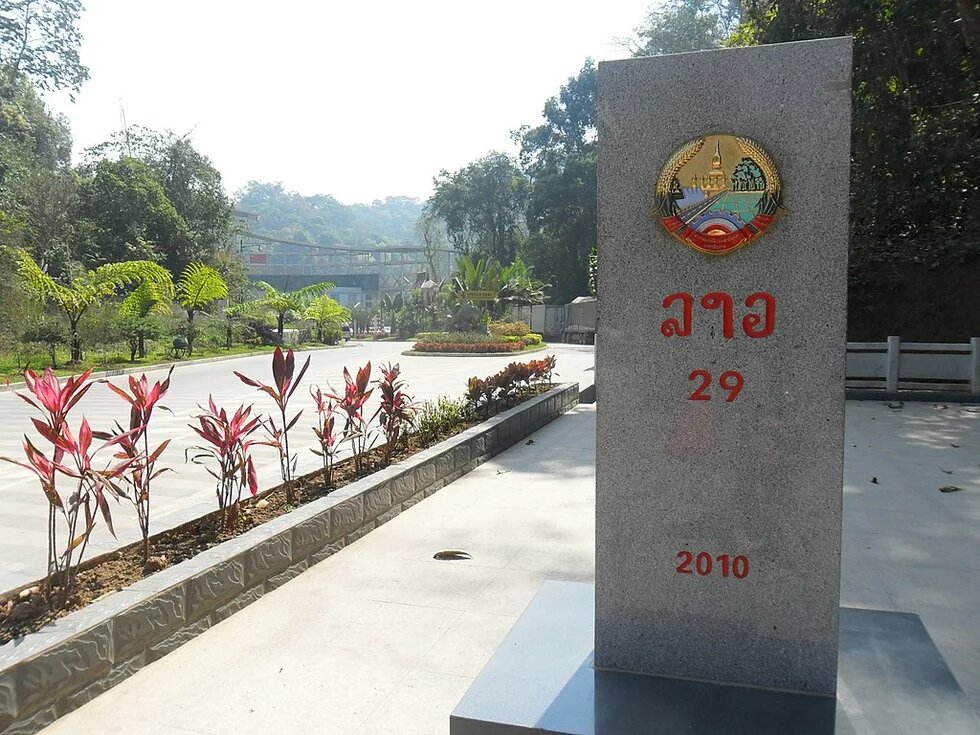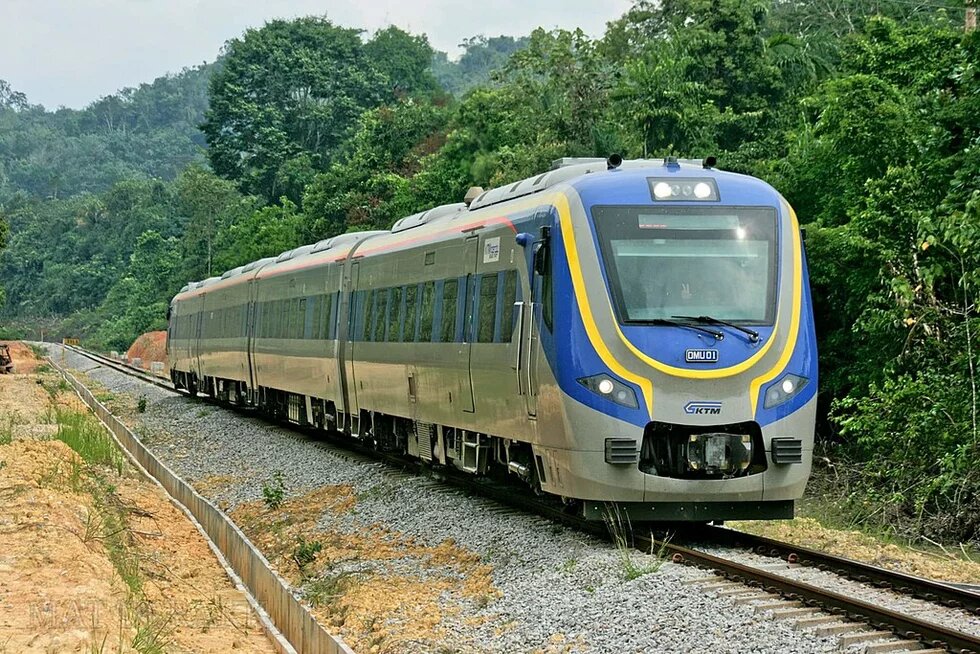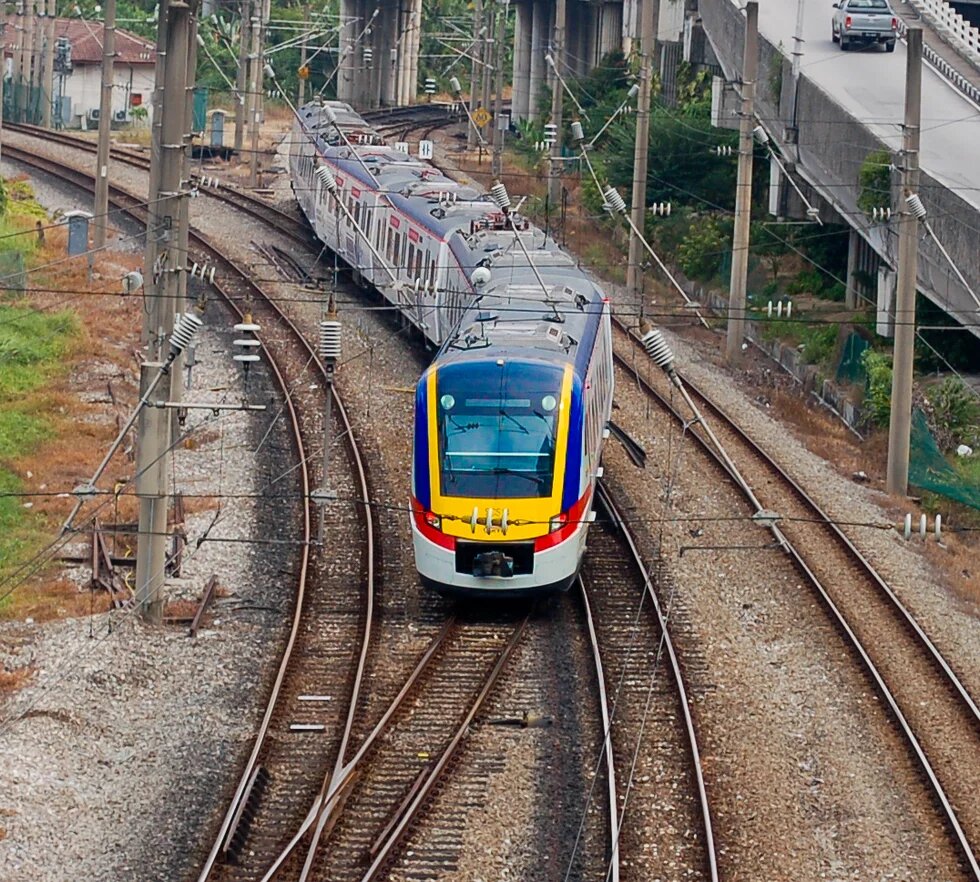
Railway travel has been immortalized as both luxury and a necessary mode of transportation for workers and travelers. Vivid images of trains trundling across land-locked Southeast Asian countries include those of cramped carriages transporting goods and people through humid conditions since the turn of the 19th century, at the height of the British Empire.
The dream to connect the region and become a gateway to Central Asia and Europe continues to this day. However, the driving force behind the effort to upgrade railway systems across Southeast Asia is no longer spearheaded by the Europeans, but rather by ASEAN member states. The vision is for seamless travel through an affordable and environmentally sustainable high-speed railway system.
This article explores the 2025 Master Plan on ASEAN Connectivity (MPAC) and its partnership with China’s Belt Road Initiative (BRI), which may open the region to more opportunities in commerce, tourism, and environmentally sustainable travel options.
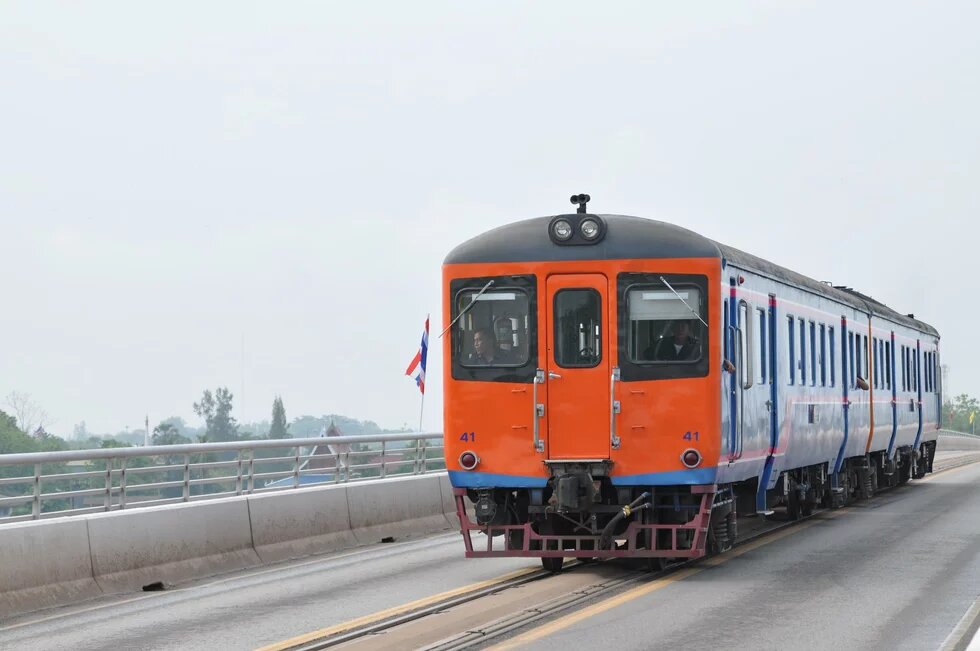
There is no more luxurious image of train travel through Southeast Asia than embarking on an unparalleled journey with the Eastern & Orient (E&O) Express. Opulent carriages with full service and fine dining offer the wealthy traveler a glimpse into a largely rural yet breathtaking world far removed from their own. Gazing in great comfort through large cabin windows, the passenger enjoys the infinite greens and yellows of rice and sugarcane fields, verdant forests, simple village homes and local houses of worship. It is a panorama reminiscent of colonial-era journeys enjoyed by royalty, colonial officers, trade tycoons, and nobility.
Southeast Asia’s railway lines have been in existence for quite some time. Today, there are plans to revive and rejuvenate the Southeast Asian Railway, as some segments are no longer in use or have fallen into disrepair. Not only will this initiative facilitate true connectivity between ASEAN states, but it can also catapult the region towards more sustainable transportation futures.
Many of the existing routes in use today still rely on the single-track meter gauge lines surveyed by the British in the 1880s. However, in a bid to take full ownership and initiative of regional connections, ASEAN’s vision is to successfully create a seamless connection throughout and within all Southeast Asian states, enabling a Pan-Asian Railway that links Malaysia to Kunming, China; a first step to opening railway pathways to Central Asia and Europe.
The Southeast Asian Railway Journey
The origins of Southeast Asia’s train lines came at the behest of the colonial powers. At the turn of the 19th Century, the steam locomotive revolution was at its peak, and people and freight were being transported vast distances by rail. Tin mining trains transporting goods for the British Empire have been running since 1885.
This was when the British envisioned Malaysia’s ‘Jungle Train,’ which still takes passengers through the stunning landscapes of the peninsula’s central forest spine. However, the difficulties of laying tracks in thick impenetrable rainforests that were home to tigers and elephants meant that it only became fully operational in 1938. Today, the train trundles across the peninsula from Johor Bahru in the south, via Gemas in Negeri Sembilan, to Tumpat, Kelantan, just 10 kilometres away from the Golok River and Southern Thailand.
Along the way, the comfortable but comparatively simple journey takes the passenger past Kuala Lipis, the former state capital of Pahang, and over the Guillemard Bridge in Tanah Merah, Kelantan – the country’s second-oldest railway bridge, built in 1925. At its end-points, the traveler can connect to other railway lines north to Thailand and beyond, as well as south to Singapore, although the original British line to Tanjong Pagar station is no longer in use.
The idea of a railway route connecting Kunming in Yunnan, China with Singapore was proposed in 1900 by the French and British in response to Russian efforts to establish the Trans-Siberian Railway. In 1904, the French built the northernmost leg between Kunming and Hanoi, then the port city of Haiphong in Vietnam, while the British worked on the Chiang Mai – Bangkok - Padang Besar (Perlis, Malaysia) segments. The building of the Causeway Bridge in 1923 across the Tebrau Strait between Malaya and the Strait Settlement of Singapore made it possible to travel relatively seamlessly between Chiang Mai and Singapore on teak carriages in E&O style.
At the time, there were ambitious plans for the railway network to expand to east and west through Vietnam, Cambodia, and Myanmar. However, these plans were halted by World War II. While the Japanese built the Thai-Burma railway, using forced labor, including allied soldiers captured by the Japanese forces, it was never commercially operated, and part of it is now submerged by the Vajiralongkorn Dam in Kanchanaburi, Thailand.
ASEAN’s Railway Dreams
Today, Southeast Asia, led by ASEAN, is keen to drive a revival of the region’s railway connections on its own terms. The 2025 Master Plan on ASEAN Connectivity (MPAC) seeks to improve how ASEAN citizens and residents live, work and travel – and central to that is the railway connection. At the 57th ASEAN Senior Transport Officials Meeting (STOM) from 11-14 June 2024, Malaysia’s Transport Minister, Anthony Loke, implored his colleagues to work together to connect the missing links in the Southeast Asian railway lines. Malaysia and Thailand announced the revival of the direct service from Bangkok to Padang Besar (Perlis) and Butterworth (Penang) in August 2024 – just two months later.
In 2021, Laos and China launched the Vientiane – Boten – Kunming railway link, a 1,035 km high-speed rail line that takes about 9.5 hours. In 2022, China opened a line between Chengdu and Chongqing to Hanoi, Vietnam, reducing freight transport time from 20 days to just 5 days. This route serves as a key passageway for the New International Land-Sea Trade Corridor (ILSTC), a trade and logistics network with Chongqing as the key transport hub for rail, road, and maritime transport.
Indeed, Southeast Asia’s strongest partner in its railway dreams is China, which views this support as a part of its Belt and Road Initiative (BRI). Launched in 2013, the initiative plans to invest in 150 countries across the region, enabling a revival of ancient Silk Road and maritime networks that connect East and Southeast Asia with the rest of the world. In theory, if all of the region’s plans materialize, it would be possible to travel entirely by rail from the United Kingdom to Singapore. ASEAN’s collaboration and cooperation in this vision are crucial, given its central role as a key corridor to the maritime fringes of the region.
According to the Southeast Asia Infrastructure report, there are also plans to build 5850 km of urban rail lines within Southeast Asia, an investment of more than USD270 billion, encompassing more than 1030 stations. These include metro rails, subways and rapid transits, with about 52 per cent expected to be completed in 2027. Not all of these projects are funded by China, nor are part of the BRI, but the Jakarta – Bandung High Speed Rail (HSR), which was launched in October 2023 with a cost overrun of USD 2 billion, was largely supported by a loan from the China Development Bank.
China’s Belt Road Initiative (BRI), along with its policies and support for commercial banks, has enabled significant investments in railway infrastructure in Laos, Thailand, and Vietnam. It is also reviving a USD9 billion railway network plan that will link Kunming with Muse in the north of Myanmar’s Shan State and Mandalay, a key component of the China-Myanmar Economic Corridor. This line will then connect to the Kyaukphyu Special Economic Zone deep-sea port. However not all ASEAN member states are entirely willing to accept China’s investment.
Sustainability and Struggle
While China’s incentives for its financial support might center around its desire to develop an alternative route to the overcrowded Melaka Strait and other geopolitical probabilities, ASEAN would like to push through the railway solution as a sustainable option for the region’s future needs.
Given that there are still lingering questions about China’s plans for regional dominance, ASEAN could play a significant role in negotiating future collaborations. With Malaysia heading ASEAN in 2025, and Malaysia’s Prime Minister Anwar Ibrahim appointing former prime ministers Thaksin Shinawatra, Hun Sen, and other high ranking officials as personal advisors for his role as ASEAN Chair, the probability of pushing through regional integration through railway diplomacy is far higher. The high-level consensus that might result from this unusual collaboration could also provide ASEAN with more leverage and alternative funding options.
To date, successful railway development has invariably contributed positively to local tourism, GDP and economic progress. The World Bank estimates that Laos’ transit trade due to the Vientiane – Boten line will increase to 3.9 million tons by 2030, up from 1.6 million tons in 2016. This represents a significant opportunity for a landlocked country that can eventually become a hub for trade and travel to China.
While the Jakarta-Bandung High-Speed Rail (HSR) has left some investors with a high interest burden, the Indonesian government points out that it contributed 86.5 trillion Rupiah to Jakarta and West Java’s GDP between 2019 and 2023. Since its launch, it has logged 4 million passengers in just 8 months.
Freight railway also stands to benefit from a Pan-Southeast Asian network. Overcrowded roads result in slow deliveries, and the earlier examples have already shown how much time is saved via freight rail. In July this year, the ASEAN Express, a Selangor (Malaysia) – Chongqing freight train through Thailand and Laos was launched, reducing transport times for frozen durian transport to just nine days. This is a huge savings in both time and costs compared with the maritime route, which takes between 14 and 21 days.
Trains have consistently been recognized as the most sustainable of all freight and passenger transport options, able to reduce emissions by two-thirds. Studies have shown that train emissions rank lowest among other transport options such as planes and cars. Trains take up less space, and are able to transport more people in an hour. They also generate far less noise than planes, trucks, and cars. However, there are no exact figures on Southeast Asia in these studies.
North American studies have shown that if just 10 per cent of its large truck freight transfers to railways, greenhouse gas emissions could be reduced by 17 million tons per year. This is the equivalent to removing 3.35 million cars from the highways or planting 260 million trees. The International Energy Agency Outlook 2024 notes that a modal shift from personal transport options to mass transit options such as rail can greatly reduce traffic issues and fuel consumption in Southeast Asia, but the region does not have the necessary infrastructure or rail commuting culture at this stage.
The possibility of transferring similar sustainability benefits to Southeast Asia is an important question in the region’s pursuit of railway dreams. Much of rail sustainability depends on the type of trains used, their source of energy and passenger numbers. Chinese high-speed rail (HSR) trains are considered less sustainable because they depend on coal. However, the Jakarta government claims that the HSR has saved USD197 million in fuel costs per year.
Electric trains that still rely on fossil fuels can emit more carbon than any other forms of transport. While hydrogen trains are the most eco-friendly option, releasing only steam as a byproduct and generating minimal noise, not many operators have the financial and technological resources to implement these systems.
Renewable energy-dependent railway lines are more sustainable, such as those in the Netherlands, which have operated entirely on wind energy since 2017. Trains in the UK and Belgium have begun using solar energy to power tunnels, tracks, signaling systems, and lights.
In contrast to China, Japan has a track record of sustainable railway systems, running their trains on a combination of geothermal, solar and hydropower energy. In August 2024, Japan successfully signed more than 70 MOUs with Southeast Asia, promising more than USD 1 billion in 14 renewable energy projects across the region. As some of these agreements involve port infrastructure, Japan’s green influence over Southeast Asia may eventually include expanding its railway technologies to the region.
In Southeast Asia, electric trains still largely run on fossil fuels, and a popular source of ‘renewable energy’ is hydropower – and therein lies the irony in this discussion. Many Southeast Asian governments list hydropower as a key component of its renewable energy portfolio, taking up 96% of the RE mix (International Energy Agency, 2024, p. 18) together with bioenergy and geothermal energy.
However, while the process of energy creation can be attributed to natural sources due to river movements and rain volumes, the construction of hydropower facilities and dams have historically led to devastation of not just natural areas, but also cultural heritage and sacred spaces, displaced indigenous and local communities, and the flooding of vital and valuable habitats. The costs and consequences of this damage in the process of creating hydropower energy is hardly ever taken into consideration when RE costs and ‘sustainability’ gains are discussed.
The use of electric vehicles is on the rise, and as has been mentioned earlier in this article, electric trains are deemed far more sustainable than coal-fired ones. But the use of electric vehicles imply the need for raw mineral production from critical minerals for energy storage. This then leads to substantial negative impacts on land and rivers through mining, a sector that is already growing tremendously in Southeast Asia. Again, the devastation that this brings to communities and the planet are not taken into account in sustainable transportation dialogues.
Aside from just energy sources, there are also other considerations to account for when assessing the sustainability of a railway network. A rail line operating at nearly full capacity at all times will be both financially viable and environmentally sustainable. However, if it runs between less populated cities with residents who are unused to inter-city travel (or unable to afford it), then individual car travel may be more sustainable.
A truly sustainable railway network needs to take passengers and freight away from other modes of transport, such as planes, without necessarily increasing demand for travel, as that could lead to other unsustainable impacts. While positive economic development is likely along the railway network, sub-optimal conditions may result in a longer period required, not only to recoup financial losses, but also to achieve genuine ecological benefits.
The International Energy Agency (IEA) notes that operating a train line accounts for 70 per cent of its emissions, while construction contributes only 20 per cent. This means the importance of having a network that is fully utilized and well-integrated to meet its sustainability goals. Its 2024 Energy Outlook reported that personal vehicles, especially motorbikes and cars are currently the favored means of transportation.
The luxury of point-to-point travel might be hard to replace with rail if additional connections from train stations to homes and urban centers are not as convenient. Ensuring that ticket prices are inclusive and accessible to all is yet another issue that will need to be overcome, and was one of the early sticking points of the planned High Speed Rail through Peninsular Malaysia to Singapore.
In Southeast Asia, there are other obstacles to the great regional railway dream. As Anthony Loke mentioned in his presentation at the 57th ASEAN Senior Transport Official Meeting (STOM), member countries need to streamline cross-border customs and immigration clearance systems. Additionally, the region’s infrastructure must be upgraded to ensure seamless connections with the rest of the world. However, much of the region still relies on British single-track meter gauge lines, creating compatibility challenges with neighboring countries.
Southeast Asia also suffers the extremes of densely populated cities and sparsely inhabited rural outskirts. Securing land to build new tracks in spaces not originally intended for railway expansion is another challenge. Malaysia’s East Coast Rail Link (ECRL) is an example of this; facing numerous obstacles ranging from community protests against rainforest damage and political pressure to amend rail routes to appease key electorates. In less developed rural areas that may suddenly have better connectivity, there is the question of economic feasibility and sensibility of building commercial and industrial centers from ground zero simply to justify new routes.
Not only is politics an issue at the local level, but navigating geopolitical tensions and assumptions that China seeks to strengthen its position in and eventually dominate the region, may also hamper effective financing and future plans. Given current global tensions and uncertainty, Southeast Asia might be well-placed to source for innovative solutions in private equity and alternative funding sources that ensure local capacity-building in technology and maintenance such as Japan or Korea.
To be able to travel via ecologically-friendly transport throughout the length and breadth of Southeast Asia is a wonderful dream. Just slowing down to take in the amazing landscapes that still exist in much of the region is a positive step toward environmental action. However, to achieve these levels of mindful travel, there is still much to overcome.
__
Dr. Serina Rahman is Lecturer at the Southeast Asian Studies Department at the National University of Singapore and an Associate Fellow at the ISEAS-Yusof Ishak Institute, Singapore.
Disclaimer: This published work was prepared with the support of the Heinrich Böll Stiftung. The views and analysis contained in the work are those of the author and do not necessarily represent the views of the foundation. The author is responsible for any liability claims against copyright breaches of graphics, photograph, images, audio, and text used.
